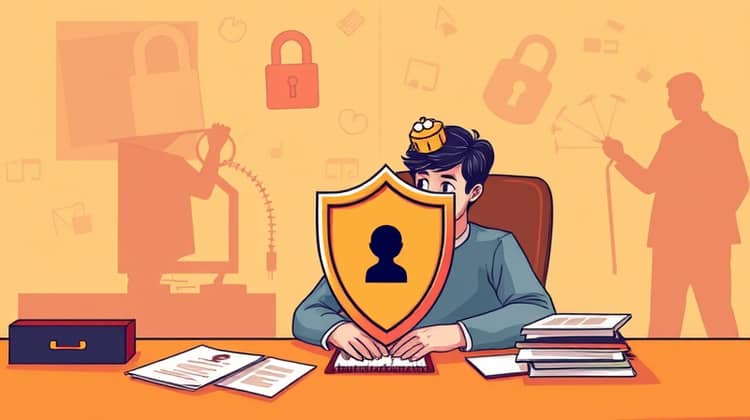Unauthorized Credit Card Charges: Steps to Take Immediately

Unauthorized credit card charges can be distressing and alarming, leaving you feeling violated and confused. When you notice an unexpected transaction on your credit card statement, it is crucial to act quickly and follow a series of steps to address the situation effectively. This guide will provide you with a clear outline of actions to take when facing unauthorized charges, ensuring that you protect your finances and personal information.
By staying calm and taking the right steps, you can resolve the issue efficiently, mitigate any potential damage, and help prevent future unauthorized transactions. It's essential to be proactive and vigilant in managing your financial accounts, especially in today's digital age.
1. Don't Panic

Receiving a notice of unauthorized credit card charges can be shocking and invoke feelings of stress and anxiety. However, the first step is to take a deep breath and remind yourself that this situation can be remedied.
Panicking will only cloud your judgment and hinder your ability to act swiftly. It's essential to approach the situation with clarity and a level head.
2. Verify the Charges

Before jumping to conclusions, take a moment to closely review your credit card statement. Ensure that the charge in question is indeed unauthorized and not a forgotten subscription or a transaction made by a family member.
This verification process is crucial as it prevents unnecessary confusion and ensures that you are taking the right actions against legitimate charges. It helps to keep track of all recent purchases made by you or authorized users on your account.
- Check the date and amount of the charge to confirm its legitimacy.
- Search for any merchant or business names associated with the charge, potentially to remember past transactions you may have forgotten.
- Look up any recurring payments you may have set up to ensure they are not the source of the charge.
If, after verifying, you still find the charge unauthorized, it is time to take further action.
3. Contact Your Card Issuer

Once you have confirmed that the charges are unauthorized, contact your credit card issuer immediately. Most credit card companies have a designated hotline for reporting fraudulent activity, and they’re available 24/7.
When you reach out, provide them with all relevant details regarding the unauthorized charges, including dates, amounts, and any efforts you've made to verify them. The issuer will be able to investigate further and typically will issue a temporary credit.
- Have your account information handy for quicker processing of your report.
- Document the details of the conversation, including the name of the representative, the time of the call, and any reference numbers provided.
- Ask the representative about the steps they will take and when you can expect a resolution.
Maintaining clear communication with your card issuer is crucial, as they will guide you through the process of disputing charges and further securing your account.
4. Dispute the Charges

If your credit card issuer confirms that the charges are indeed unauthorized, you will need to formally dispute them. This process varies among different issuers, but it typically involves filling out a dispute form either online or via mail.
Make sure to provide any evidence that supports your claim, as this will bolster the chances of a successful resolution. Keep copies of all communications for your records.
- Outline the reason for your dispute clearly, including relevant transaction details.
- Attach any evidence, such as receipts or statements, that substantiate your case.
- Submit your dispute within the timeframe specified by your credit card issuer to ensure they can take action.
Be sure to follow up on your dispute after submission to check on its status, ensuring that it is being processed appropriately.
5. Monitor Your Account

After disputing the unauthorized charges, it's essential to monitor your credit card account closely. Regularly review your statements and online banking to catch any new suspicious transactions as soon as they occur.
Consider setting up alerts via your bank's app or website to notify you of any transactions over a certain amount, which can help you respond quickly to unauthorized charges in the future.
- Check your statements weekly to keep a close eye on activity.
- Set alerts for transactions that exceed a certain threshold or any online purchases made using your card.
- Regularly review your credit report to spot any unusual activity.
Persistent monitoring can provide peace of mind and assure you that your financial information is secure moving forward.
6. Update Your Information

Following unauthorized charges, it's wise to update your account information. This could include changing your online banking password and, if necessary, your security questions.
If your card has been compromised, your issuer will likely provide you with a new card that has a different number and expiration date, ensuring that further unauthorized charges are prevented.
7. Consider a Credit Freeze

In cases of theft or repeated unauthorized charges, placing a credit freeze on your accounts can be an advisable step. A credit freeze prevents lenders from accessing your credit report, making it difficult for identity thieves to open new accounts in your name.
This added layer of security can help mitigate damage and provide you with significant peace of mind during uncertain times.
- Contact each of the major credit bureaus: Experian, TransUnion, and Equifax.
- Request the freeze and provide identification to verify your identity.
- Understand that you will need to lift the freeze in the future if you wish to apply for new credit or loans.
While a credit freeze does not affect your existing accounts, it is an excellent preventive measure against identity theft, ensuring that you are taking the necessary precautions to safeguard your personal data.
8. Stay Alert for Identity Theft

Once you've dealt with unauthorized charges, it’s vital to remain vigilant against identity theft. Keep a watchful eye on your financial accounts, credit cards, and any other personal information that could be compromised. Monitor your credit reports for any unfamiliar activity.
Identity theft can manifest in various forms, so being alert will help catch potential issues before they escalate further.
Be Proactive, Not Reactive

Handling unauthorized credit card charges requires a proactive mindset. Understand that protecting your finances is an ongoing task, and it is crucial to take measures before incidents occur, rather than just reacting after the fact.
Regularly practice good financial hygiene, such as using strong, unique passwords, and avoiding public Wi-Fi for transactions, keeping your financial information secure.






